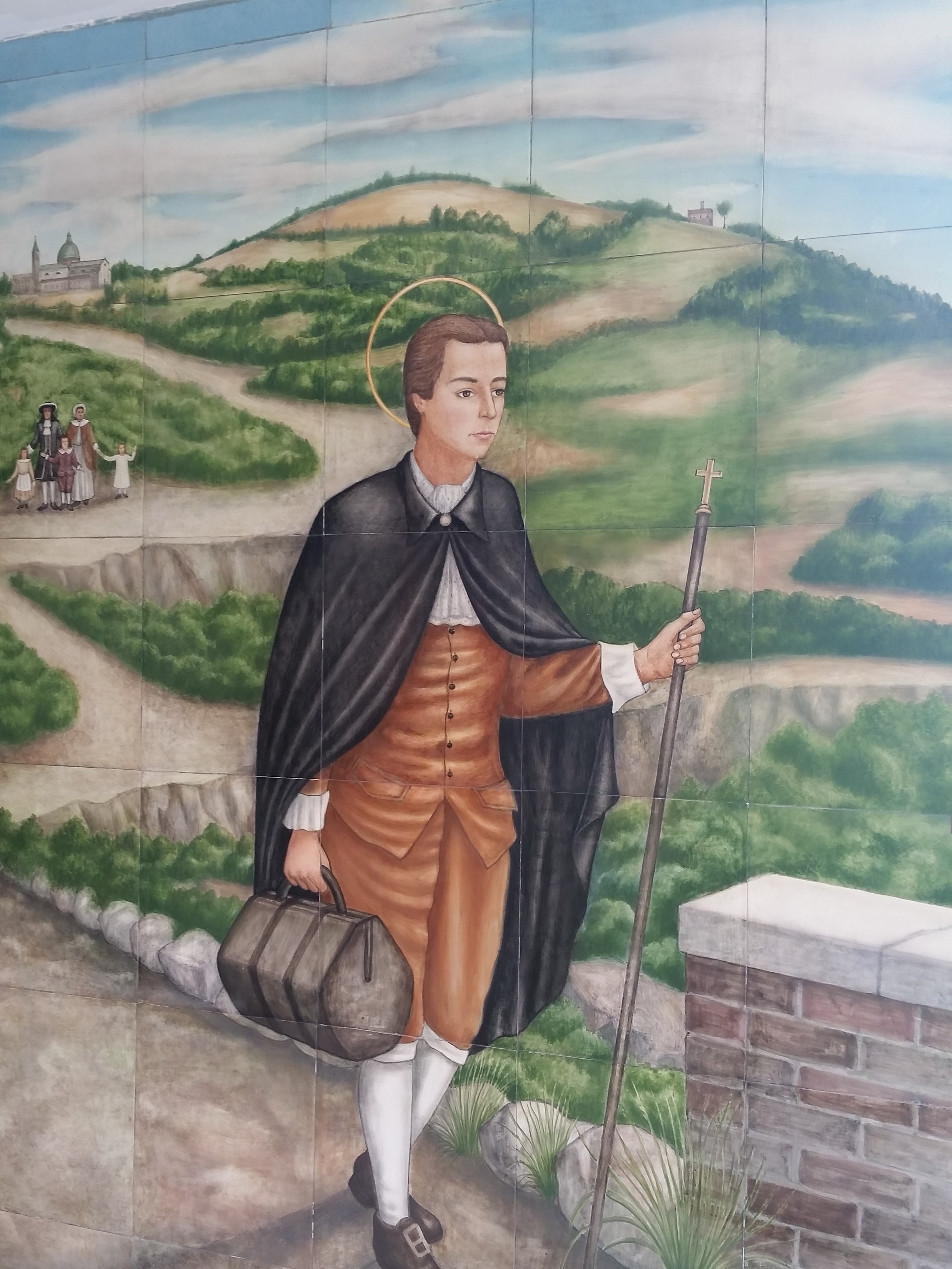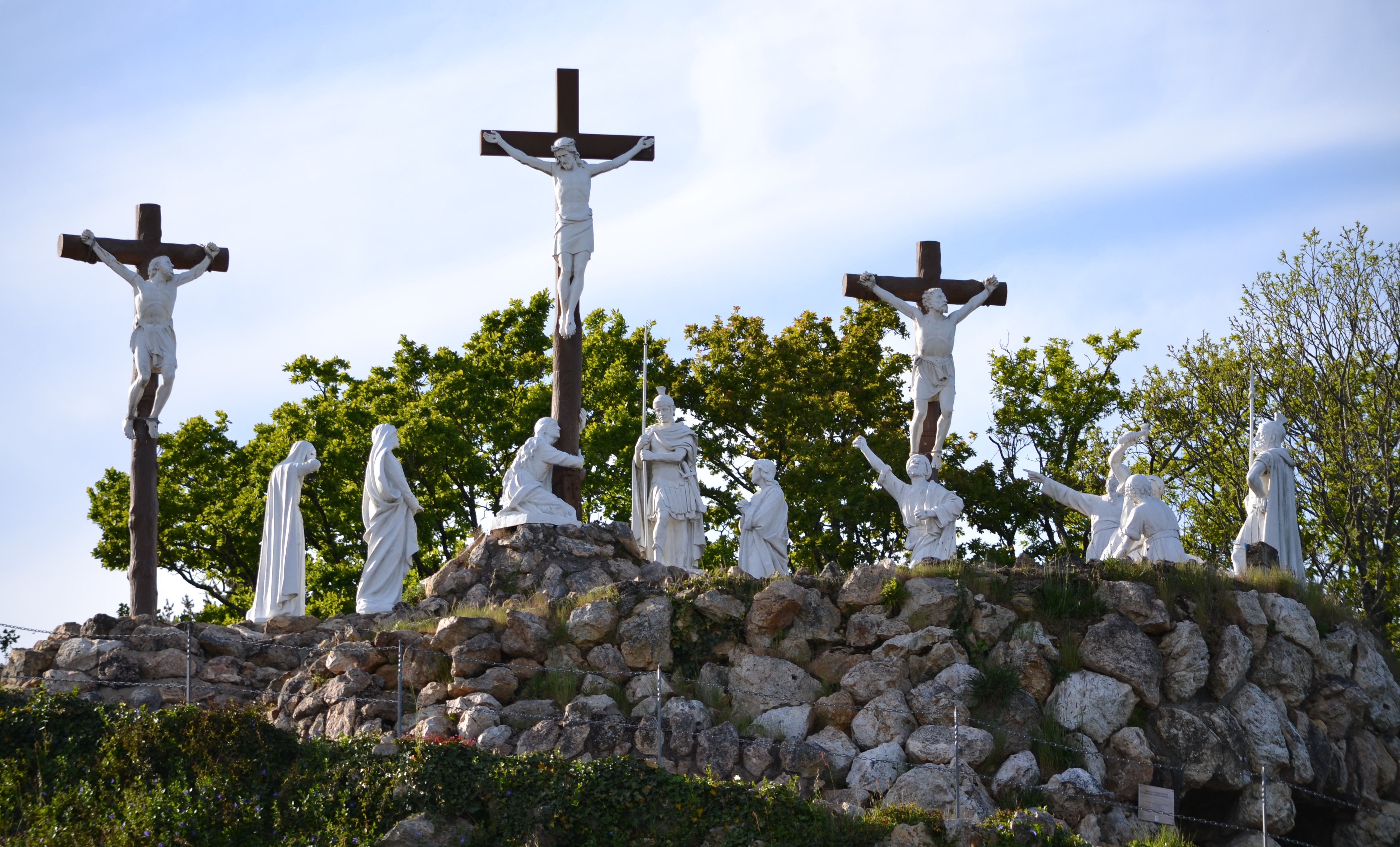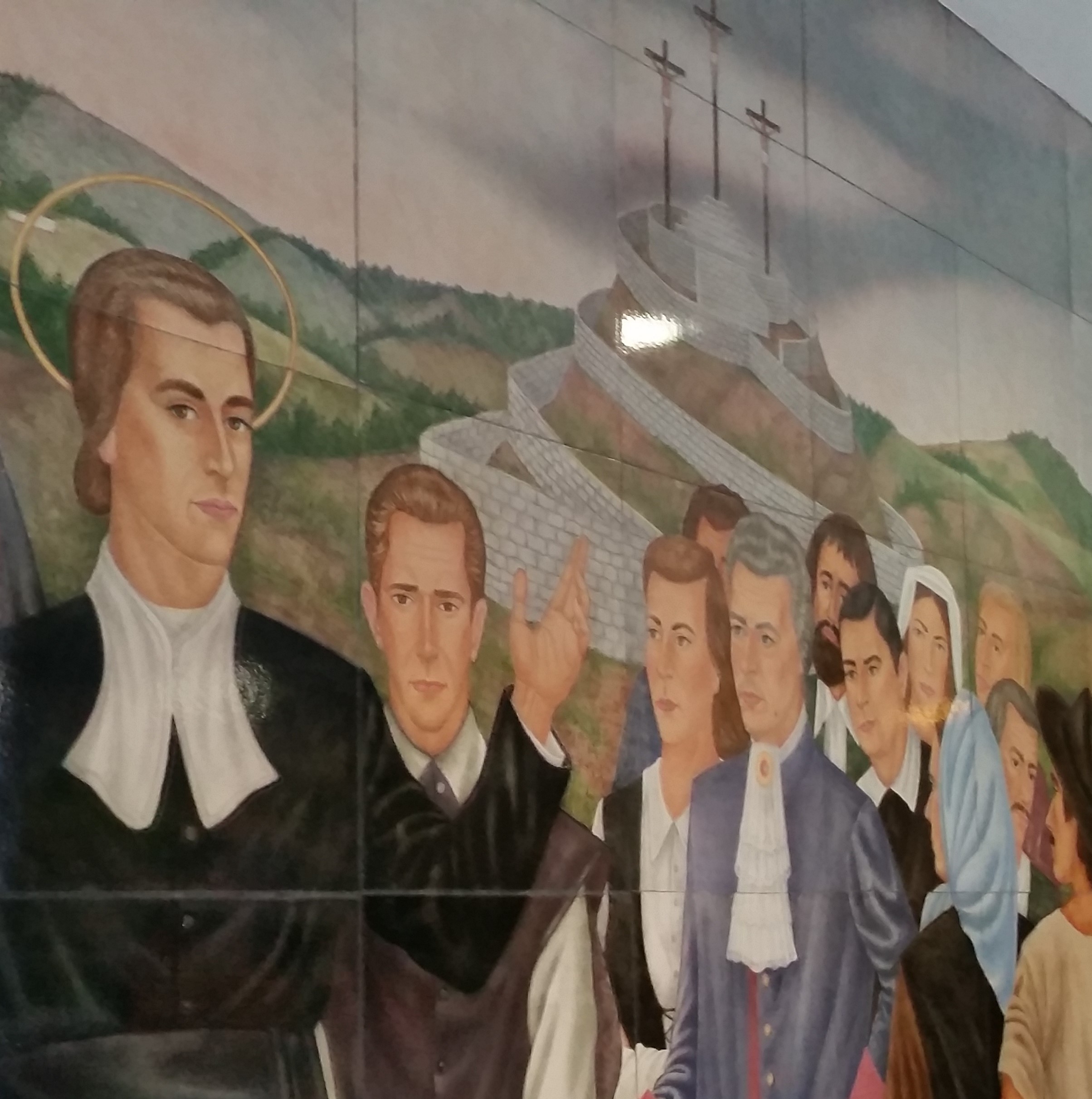Saint Louis Marie de Montfort
An Often Misunderstood Saint Part VII: The Pontchateau Affair (continued)
Fr. Patrick Gaffney, SMM
O nce the building of the Calvary at Pontchateau was begun, Father de Montfort and his team continued preaching parish missions in the Nantes diocese. At least once a week he returned to the site to over-see the construction of the new shrine. His overpowering, comforting presence was a dynamo of strength for these simple people whose sole pay was the privilege of worshipping the carved Christ still located in the grotto (the meager ration of food was not to be considered a salary!).
Dark, threatening clouds were not long in coming. Construction had begun ln the summer of 1709. Several months later, around April or May 1710, the Bishop of Nantes examined the site while on a pastoral visit to Pontchateau. What he saw was not so much a Calvary as a large man-made hill with trenches dug in on the sides and a cave hollowed out squat in the middle of lt. Like Louis de Montfort himself, the shrine was out of the ordinary, mysterious, strange. He decided then and there that he would not bless such a Calvary. Bishop de Beauvau correctly suspected that there would be trouble. He was well aware of the concern for the military security of the area. Within the last several months, two English corsairs camouflaged among the rocks off Ile du Met near St. Nazaire (which on a clear day could be seen from the top of the Pontchateau hill) attacked four French frigates. Would it be surprising if some people looking for trouble – and the Bishop was well aware that Montfort had his share of enemies – would maliciously misinterpret the hill for a hideout? After all, it was an oddly built mound! However, he never forbade the blessing of the Calvary. But most definitely, he would not do the honors. In order to give some positive show of support, he strongly promoted the re-building of the ancient Mary Magdalene chapel nearby.
Louis de Montfort was rightly concerned. He not only hurried up the refurbishing of the chapel, but he had Father Olivier write to a friend, Bishop de Saint-Vallier of Quebec who was on a visit to Paris, asking him to secure the formal authorization for the Calvary from the new baron of Pontchateau, Bishop Henri de Coislin of Metz. After all, the shrine was on his land. Permission was granted. Montfort, bolstered by the accord with Bishop de Coislin, apparently thought that there was no longer cause for alarm. He did not suspect what was being plotted by his enemies.
From a distance of almost three hundred years, it appears that the chief culprit in the plan to destroy the Calvary was the sheriff of Pontchateau, Guischard de la Chauveliére, an employee of Bishop de Coislin. And what sparked his plot to bring Montfort’s enterprise to ruins was a rather ordinary event. A few months previous, shortly before the death of the then baron of Pontchateau, Pierre de Coislin, Louis de Montfort white-washed the filthy walls of the Church of Campbon. Nothing extraordinary, for the missionary often restored parish churches during a mission. However, the coat of arms of the de Coislin family happened to be on a side wall and Father Grignion de Montfort painted over it! The sheriff complained. He threatened the missionary. But the cleanliness of the house of the Lord was far more important in the eyes of Montfort than the dusty, dingy coat of arms of any lord or lady which didn’t after all, belong on the wall of a Church anyway! Perhaps the de Coislin family was not upset, but the sheriff was. And he vowed to get even. This simple event set off a chain reaction culminating in the destruction of the Calvary of Pontchateau.
De la Chauveliére was not a very important person himself but one who had significant connections. He bypassed his legitimate superior, Bishop de Coislin, and sent a report directly to the General Lieutenant in Brittany, Marshal de Chateaurenault, stating in unambiguous terms that a fortress had been built in Pontchateau, complete with trenches and underground caves. Perhaps the English military, always prowling the waters not so far away, would find refuge there. The sheriff could almost see an English helmet popping up from one of the trenches! And if not the English, certainly beggars and brigands would hole up ln the stronghold. Chateaurenault was greatly alarmed. The sheriff knew then that his vendetta would be successful.
The Lieutenant in Brittany quickly informed his superior, the Marquis de Torcy, the Secretary of State for Foreign Affairs (the province of Brittany came under that office!). Torcy, in turn, demanded a full report from the administrative officer of Brittany, a Monsieur Ferrand.
Ferrand was powerful. An agent of the King, in charge of public life of Brittany, he was also the overseer of ecclesiastical affairs in the province.
Irked that he was the last one to find out about this “fortress,” and upset that Father de Montfort had never even informed him of what was going on, he decided not only to ask his lackeys to investigate the matter but to do so himself. With his wife and a group of elegant friends, he showed up one day at the site itself. Louis de Montfort was there. He received the fashionable group with cold reserve for it was evident that they had come to gape and not to pray. They had not even genuflected before the Calvary! But when Ferrand ordered some of his people to take the measurements of the “trenches and subterranean caves,” the missionary was alarmed. He knew then that the fears of Bishop Beauvau were for real, in spite of any permissions from the Baron of Pontchateau, Bishop de Coislin.
Ferrand’s onsite report to the Secretary of State, Torcy, was decidedly negative. The so-called shrine could definitely be used as a citadel by brigands or worse. Torcy then went after the Bishop of Nantes. On September 2, 1710, less than two weeks before the scheduled blessing, Bishop Beauvau sent his response to Torcy. From the vantage point of almost 300 years after the event, the Bishop’s memorandum to Torcy seems spine-less, even fawning, for it was a confirmation of the report of Ferrand (although the Bishop was kept in the dark about its author) but with nuances: the Calvary was intended to be a religious shrine and no more. Certainly the Bishop now more than suspected that the worst was about to happen.
When the powerful Ferrand learned the contents of the Bishop’s document to Torcy, he was far from satisfied. After all, Bretons were too independent, and it could be that they were hatching some plot at Pontchateau! On September 8, six days before the blessing, he wrote a memorandum to one of his subordinates: “‘No one at all want to tell the truth concerning this affair!” However, the elderly, sickly King himself had already made a decision: Get this whole petty thing over with! Restore order! Destroy the Calvary! Louis XIV communicated his command to Torcy who in turn passed it on to Ferrand who – with uncontrollable glee – sent it on to the Bishop of Nantes:



Tile mural depicting a scene of St Louis de Montfort’s Life and Pontchateau Today and at the Time of Fr. de Montfort
This mural (image #1) appears immediately outside the chapel in Montfort’s Spiritual Center. This first scene depicts Louis Grignion’s leaving to begin his studies in Paris. Louis Grignion walked to his destinations and this journey was no different. It is over 250 miles between the towns. He would give up his clothes and money along the way.
The second image is how Pontchateau looks today. The Calvary scene built by the town and Fr. de Montfort over 110 years ago, then by order of the bishop, was dismantled, was rebuilt years later. Several of the crosses and characters at the time of the initial build were saved and, years later, used during the rebuilding.
The third image is actually a tiled mural of Fr. de Montfort at Pontchateau and is located outside the Chapel of Montfort Spiritual Center.
However, the elderly, sickly King himself had already made a decision: Get this whole petty thing over with! Restore order! Destroy the Calvary! Louis XIV communicated his command
“. . . His Majesty, having learned, Sir, that this Calvary is more fit to be a hideout for people of bad will then to entertain the devotion of people, has ordered me to write to you that it is His will that all that has been built be demolished, and that the ditches be entirely filled with the earth taken from them and that the crosses, the figures of devotion and the other constructions be destroyed.”
The little sheriff of Pontchateau had won and far beyond his dreams! The price of whitewashing the walls of the Campbon Church was expensive indeed.
(to be continued)


